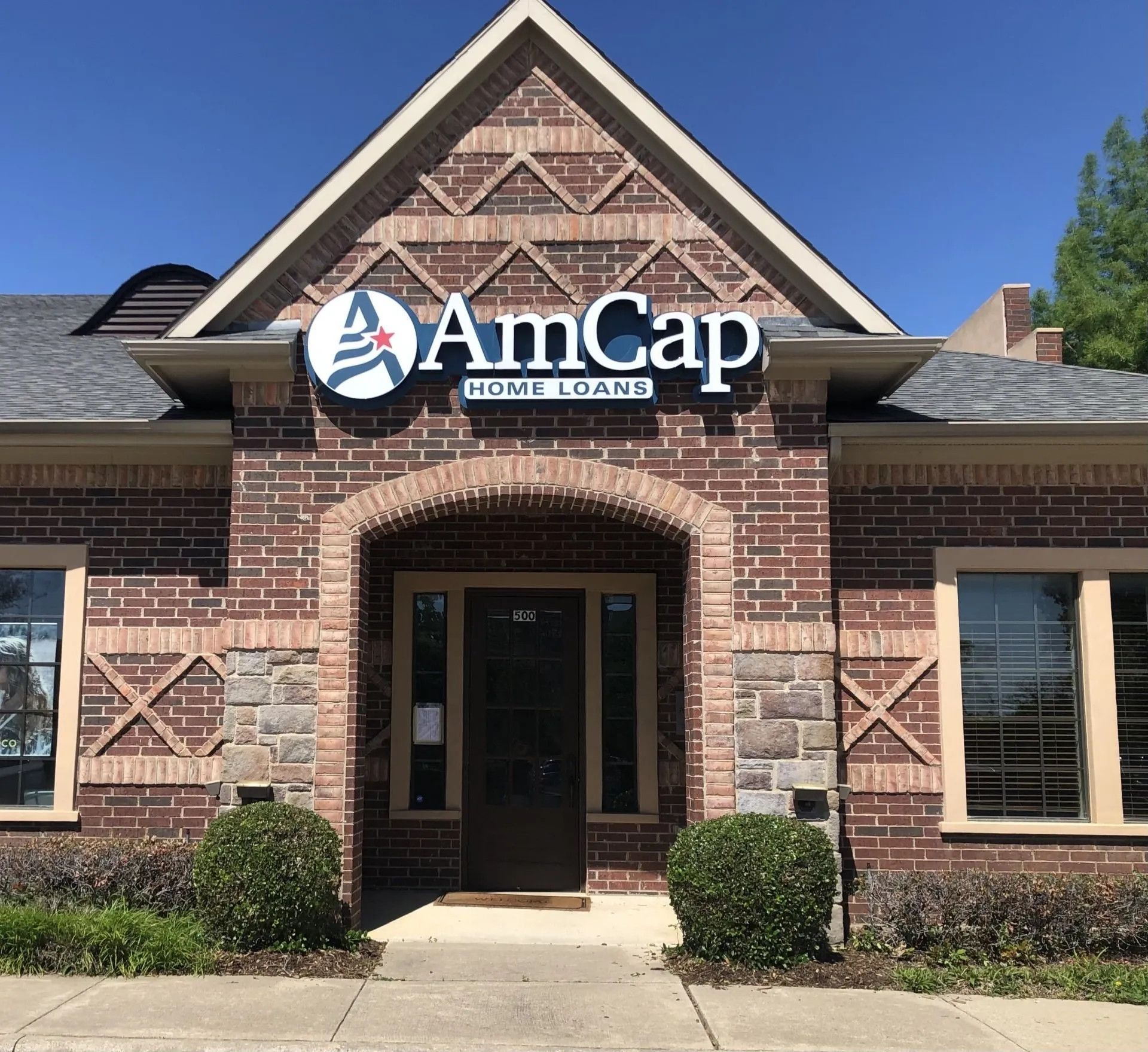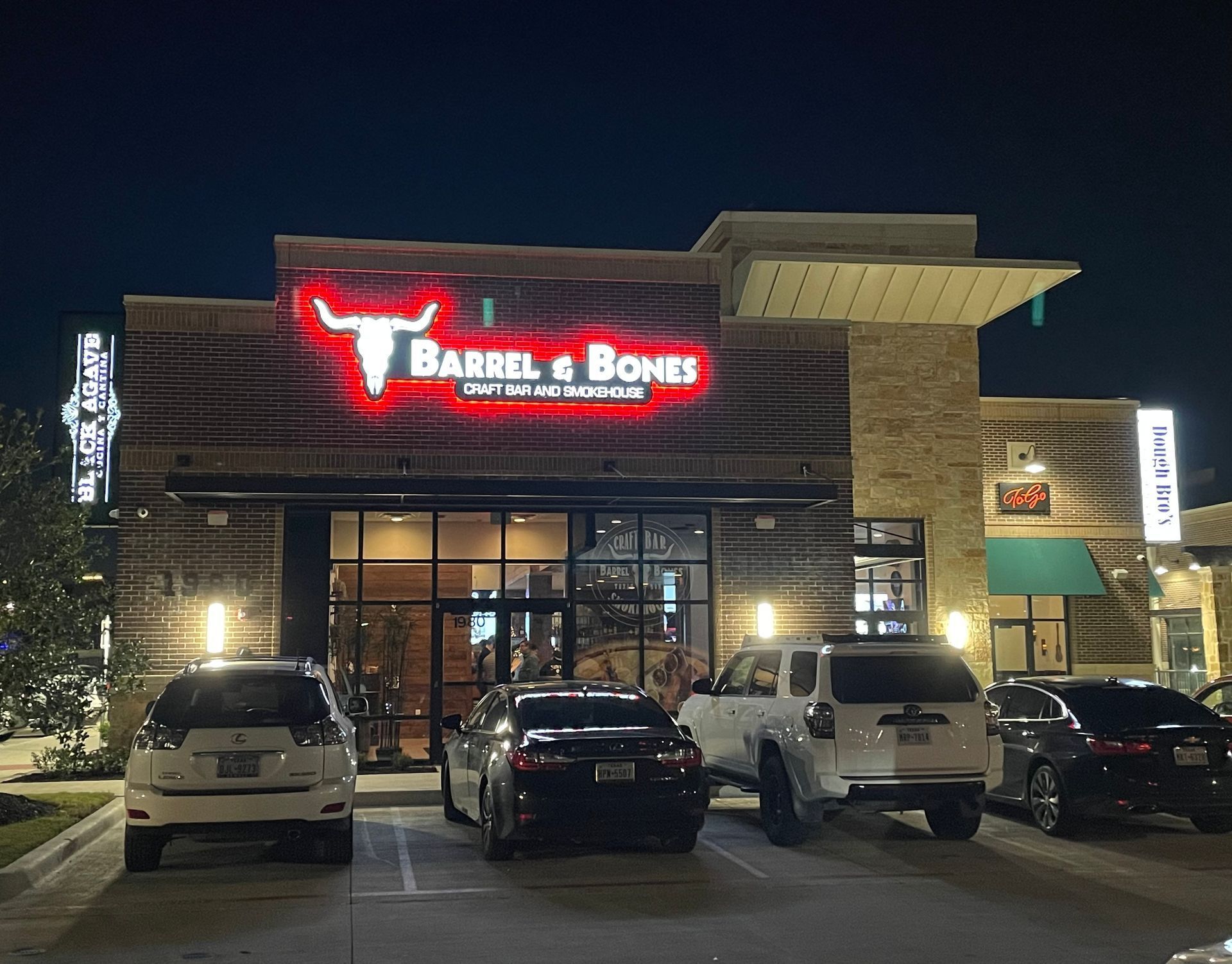Understanding Flower Mound's Sign Code: Balancing Aesthetics and Functionality
January 28, 2024
January 28, 2024
Like all other municipalities in North Texas, Flower Mound has adopted a sign code aimed at creating a visually cohesive environment while allowing businesses to effectively communicate with the community.
The regulations outlined in the town's code demonstrate a clear intention to strike a balance between encouraging aesthetically pleasing signage and ensuring public safety. In this article I will address what Flower Mound’s sign code has to say about a few of the most common sign types used by businesses.
As stated in
chapter 86
of the Flower Mound sign code, the primary purpose of the sign code is to enhance the town's visual appeal by promoting consistent, high aesthetic standards in signage. Flower Mound aims to use these regulations as a positive tool, benefiting both citizens and the business community. Importantly, the regulations are designed not to discourage aesthetically pleasing signage but rather to guide the design, materials, and placement of signs.
To maintain control and quality in the signage within the town, any person or business involved in the installation, servicing, or maintenance of signs must be registered with the town. This includes a licensing requirement for sign installers, emphasizing the importance of adherence to the regulations outlined in the code.
Flower Mound’s sign code provides detailed guidelines for sign illumination, emphasizing the importance of continuous and non-flashing lighting. The regulations aim to ensure that illuminated signs do not pose safety hazards or interfere with traffic. Additionally, all electrical wiring must conform to the town's electrical codes, contributing to overall safety and reliability.
Ground signs are essential for businesses and institutions to be easily identified. Ground signs are subject to specific requirements and are outlined in
section 86-67
of the code. These include limitations on height, width, and sign area, ensuring a harmonious streetscape. The code provides clear instructions on what information can be displayed on ground signs for churches, schools, and nonresidential uses.
The code also addresses the spacing, architectural compatibility, and setbacks for ground signs, emphasizing the importance of maintaining a consistent and visually appealing environment. Restrictions on changeable message signs are outlined, with specific allowances for certain entities such as churches, schools, and institutional uses.
Wall signs, attached to buildings, mansard roofs, or subdivision screening walls, are subject to size restrictions based on lineal footage. The code outlines specific rules for different types of businesses, including nonresidential multitenant buildings and those with exterior access. Building identification wall signs are also addressed, with limitations on size and placement to ensure a cohesive and balanced aesthetic.
Flower Mound's sign code, as detailed in these sections, reflects a thoughtful approach to urban planning, focusing on aesthetic appeal, safety, and the needs of the community. However, navigating language and regulations in the code of ordinances can be daunting for businesses because different cities and local jurisdictions have their own set of rules and regulations regarding signage. These regulations can vary significantly in terms of size, placement, illumination, materials, and even the content of the signs. Businesses must familiarize themselves with the specific requirements of each location where they operate.
A licensed and registered sign company like SIGMA Sign Co. plays a crucial role in helping businesses navigate sign regulations in different cities. Most signs require sign permits and each municipality has its own set of sign requirements for business to follow and many landlords include additional sign requirements in your lease for your building. Our years of experience will help make sure your signs are in compliance with the local code and we can help provide what is needed for you to receive approval from your landlord as well.
SIGMA Sign Company is well-versed in local sign regulations and zoning ordinances. We can provide businesses with expert advice on how to design, install, and maintain signage that complies with the specific requirements of each city or municipality. We will also obtain necessary permits for signage and can also work with your landlord on sign approvals to meet lease requirements. Visit us on the web at
www.sigmasignco
or call us today!


June 27, 2025
LED signs, with their vibrant displays and dynamic capabilities, have become a top choice for businesses looking to stand out. One of the most common questions business owners ask is: What are the operational costs of LED signs? This blog post dives into the key factors affecting the operational costs of LED signs for storefront businesses, helping you make an informed investment decision. Why Choose LED Signs for Your Storefront? LED signs are renowned for their bright, customizable displays that can showcase promotions, brand messages, or even animated content. Unlike traditional neon or fluorescent signs, LED signs offer superior energy efficiency and durability. Upfront costs of purchasing and installing an LED sign can vary (typically $4,000 to $10,000 or more depending on size and features), but the ongoing operational costs are also a consideration for business owners. Let’s break down these costs. Key Operational Costs of LED Signs One of the standout benefits of LED signs is their energy efficiency. LED technology consumes significantly less power than other signage options. On average, an LED sign uses about 5 watts per square foot, compared to 30-50 watts for neon or fluorescent signs. For a typical 20-square-foot storefront LED sign running 12 hours a day, you might use approximately 100 watts per hour, or 1.2 kWh daily. Cost Estimate: Assuming an average electricity rate of $0.14 per kWh (based on U.S. commercial rates in 2025), the daily cost is roughly $0.17, or about $5 per month. For larger signs or longer operating hours, costs scale accordingly, but LED signs remain far less expensive to run than older technologies. LED signs are built for durability, with a lifespan of 50,000 to 100,000 hours (approximately 6-12 years at 12 hours daily). Their solid-state design means fewer moving parts and less wear compared to neon or fluorescent signs, which require frequent bulb or gas replacements. Final Thoughts: Are Static LED Signs Worth It? For storefront businesses, LED signs offer a compelling mix of affordability and impact. With operational costs as low as $4-$10 per month for electricity and minimal maintenance, they’re a budget-friendly way to enhance your storefront’s appeal. Their long lifespan and energy efficiency expenses make them a smart investment for small businesses, from cafes to retail shops. Ready to light up your storefront? At SIGMA Sign Co. we specialize in LED signs and can manage all aspects of the sign process including, design, permitting, installation, and maintenance. Contact us today to get started on creating a powerful, energy efficient sign that makes your business stand out!

March 27, 2025
At SIGMA Sign Co., we understand that installing an outdoor sign is a crucial step in promoting your business. However, the permitting process can be complex and time-consuming. With our expertise, our team will simplify this process for you by navigating the permitting process successfully for you. Step 1: Understanding Local Regulations Each city and municipality has unique regulations regarding outdoor signage. These rules may include restrictions on size, height, lighting, and placement. Our team is familiar with local codes and can help you determine the requirements for your area. We'll work with your local zoning or building department to ensure your sign meets all regulations. Step 2: Preparing Detailed Plans Our design experts will create detailed plans that align with your brand vision and meet permitting requirements. These plans typically include: Sign dimensions and design details Materials to be used Proposed installation location Electrical requirements (if applicable) We provide clear visuals such as mockups, blueprints, and site photos to ensure a smooth approval process. Step 3: Submitting Your Permit Application SIGMA Sign Co. can handle the entire permit application process for you. This often requires: Contractor registration A completed permit application form Detailed site and design plans Proof of property ownership or landlord approval Engineering certification (if required) We'll also take care of the permit fee process, which varies depending on your location and project scope. Step 4: Engaging with Local Authorities In some cases, city officials may request adjustments to your design. Our team will stay in close communication with authorities to ensure your project moves forward without delays. If required, we'll attend zoning board or council meetings to advocate for your sign's approval. Step 5: Scheduling Inspections Once your permit is approved, SIGMA Sign Co. will manage the inspection process to ensure your sign complies with safety codes and local regulations. We’ll coordinate inspections during and after installation for a seamless experience. Step 6: Partnering with SIGMA Sign Co. Choosing SIGMA Sign Co. means you’re working with experienced professionals dedicated to delivering compliant, high-quality signage. We take the hassle out of the permitting process, so you can focus on growing your business. Final Thoughts Navigating the permitting process doesn't have to be overwhelming. At SIGMA Sign Co., we specialize in managing all aspects of sign design, permitting, and installation. Contact us today to get started on creating a powerful sign that makes your business stand out!

By 7015546988
•
March 27, 2025
When designing logos, signs, or other graphics for your business, you may hear the term "vector file." But what exactly is it, and why is it important? A vector file is a type of graphic file that uses mathematical equations to create lines, shapes, and curves. Unlike pixel-based images (like JPEG or PNG), vector files are scalable without losing quality. Because vector files are mathematical, machine tool paths can be programed allowing signs to be cut and or bent into dimensional components. Vector art also ensures your logo will stay crisp and sharp whether it's printed on a business card or a billboard. Why Choose Vector Files? Perfect for Scaling: Need your logo on a storefront sign or a vehicle wrap? Vector files allow you to resize your design without it becoming pixelated or blurry. Smaller File Size: Vector files often take up less storage space than high-resolution raster images. Easy to Edit: Vector graphics can be modified quickly, allowing designers to adjust colors, shapes, and text with precision. Common Vector File Formats .SVG (Scalable Vector Graphics) – Ideal for web graphics. .AI (Adobe Illustrator) – A common format for professional design work. .EPS (Encapsulated PostScript) – Often used for large-scale printing. .PDF (Portable Document Format) – Can maintain vector properties when saved correctly. Why Does It Matter for Your Signage? Using vector files ensures your sign is sharp, professional, and scaled to fit your space. Whether you're showcasing your brand on a storefront, vehicle, or banner, vector files are key to achieving amazing results. If you're investing in professional signage, make sure your designs are created in vector format — it's the best way to ensure your brand looks its best at any size!


